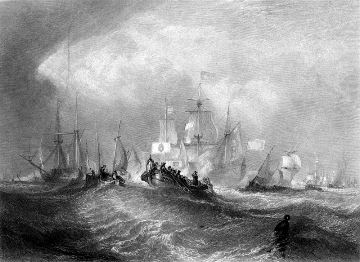The Glorious Revolution of 1688-89 was not a foreign invasion but a popular revolution. James II realised he could not fight William of Orange as the regime was collapsing.
Reasons for the collapsing regime, and ultimately the revolution, were as much religious as political. 'Popery', the fear or hatred of Catholics and the Catholic church, resulted in James II's most powerful subjects revolting against him due to an overwhelming belief that Catholics were plotting to overthrow the Church and State.
Orange's invasion proved successful in part due to this underlying dislike of James II's religious policies.
This interpretation challenges the view that the Glorious Revolution was a foreign invasion, and can be applied in the classroom to:
- Challenge pupils' and the teacher's preconceptions
- Bring in different interpretations to challenge pupils in regards to GCSE questions
- Encourage pupils' to explore possible alternative reasons and theories for a historical event

Helen MacGregor, Head of History at Queen Elizabeth's School, Barnet, was inspired to suggest this teaching idea after hearing Professor Tim Blanning's (University of Cambridge) lecture on 'How glorious was 'The Glorious Revolution?' at our History Enrichment Residential, 2016.
Schools Programme members and course attendees can download the resources from the event in the PTI Staffroom.
Want to discover more inspiring subject knowledge? See our upcoming courses and events for 2017, including our upcoming CPD Day's on The First World War for Key Stage 3 and David Starkey: Cementing the Tudor dynasty, as well as our New Teacher Subject Days course for History teachers.
Find more knowledge nuggets here!
Image: Prince of Orange Landing at Torbay, engraving by William Miller, licensed via Wikimedia Commons (https://commons.wikimedia.org/wiki/File:Prince_of_Orange_engraving_by_William_Miller_after_Turner_R739.jpg)
